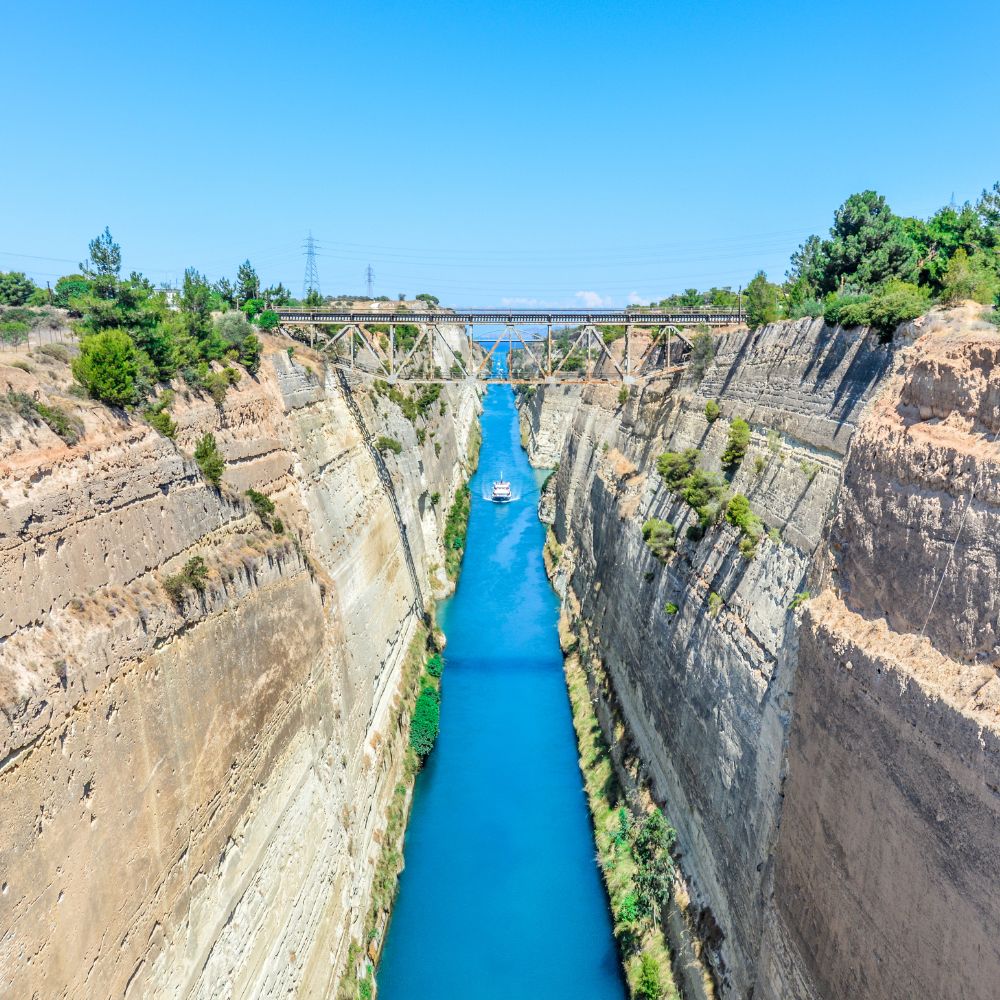The word “isthmus” comes from the Ancient Greek word for “neck” and refers to the narrowness of the land.
The Corinth Canal was inaugurated on July 25, 1893, and is one of the most important infrastructure works in Greece.
The canal connects the Ionian and the Aegean making the passage of cargo and passenger ships between the two seas much quicker. The idea for a shortcut to save boats sailing all around the Peloponnese was long considered by the Ancient Greeks.
The ancient history of Corinth
The first attempt to build a canal there was carried out by the tyrant Periander in the 7th century BC. He abandoned the project owing to technical difficulties, and instead constructed a simpler and less costly overland stone ramp, named Diolkos, as a portage road. Remnants of Diolkos still exist today next to the modern canal.
By the reign of Tiberius, engineers tried to dig a canal but were unable to make it due to a lack of modern equipment. Instead, they used an Ancient Egyptian device: boats were rolled across the isthmus on logs, as the Egyptians had rolled blocks of granite to make their pyramids.
In 67 AD, Roman emperor Nero ordered 6,000 slaves to dig a canal with spades. Historian Flavius Josephus writes that the 6,000 slaves were Jewish pirates, taken captive by Vespasian during the Jewish wars.
According to Pliny the Elder, the work advanced four stadia (about 0.8 kilometers).
In the modern era, the idea was first seriously proposed in 1830, soon after Greece’s independence from the Ottoman Empire. Greek statesman Ioannis Kapodistrias hired a French engineer to put together a realistic project — which ended up with an estimated steep cost of 40 million gold francs — making Greece abandon the costly project once again.
Soon, Prime Minister Thrasyvoulos Zaimis signed a law in 1870 that authorized the engineering project of the Corinth Canal.
A French company oversaw the project that resulted in the construction phase starting and soon after ending — again due to cost issues.
The dream of the Corinth Canal would finally become a reality when in 1881, the Société Internationale du Canal Maritime de Corinthe was commissioned to construct the canal and to operate it for the next 99 years.
Construction began in April 1882, however, eight years later, Greece ran out of money. This time, a Greek company stepped in and the canal was finally completed in July 1893.
Today, two road bridges, two railway bridges, and two submersible bridges at both ends of the canal connect the mainland side of the isthmus with the Peloponnese side.
A landslide along the Corinth Canal in July has thrown a monkey wrench into restoration works on the important shipping route between the Greek mainland and the Peloponnesian Peninsula.
The Canal has been closed since January due to previous landslides, and although works have been ongoing, it seems that the waterway known as the “Greek Suez” will remain closed for the foreseeable future.
Repair work has been underway in Corinth since January 2021, when the first major landslide of the year occurred at the Canal.
According to studies moisture and erosion caused the loss of the stone piers that supported and protected the earth from falling into the canal.
In July 2022, Greece temporarily reopened the Canal.


